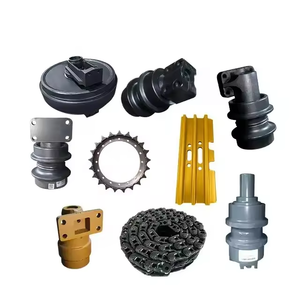**Construction of Stepped Megalithic Walls Using Excavators and Bobcat: Traditional Craftsmanship Meets Modern Machinery**
(Construction of Stepped Megalithic Walls Using Excavators and Bobcat: Traditional Craftsmanship Meets Modern Machinery)
The construction of stepped megalithic walls, a hallmark of ancient engineering, has long been admired for its precision, durability, and aesthetic appeal. These walls, often found in terraced landscapes, were traditionally built using manual labor, with skilled craftsmen meticulously placing massive stones to create stable and enduring structures. However, in the modern era, the integration of heavy machinery such as excavators and Bobcats has revolutionized the construction process, blending traditional craftsmanship with cutting-edge technology. This article explores how the use of modern machinery has enhanced the efficiency and scalability of constructing stepped megalithic walls while preserving the integrity of traditional techniques.
### The Legacy of Stepped Megalithic Walls
Stepped megalithic walls are a testament to the ingenuity of ancient civilizations. These structures, often seen in regions with hilly or mountainous terrain, were designed to prevent soil erosion, manage water runoff, and create usable land for agriculture or habitation. The walls are characterized by their stepped design, with large, irregularly shaped stones carefully stacked to form a stable and interlocking structure. The absence of mortar in many of these walls highlights the precision of their construction, as the stones rely on their weight and placement to maintain stability.
Traditionally, the construction of such walls required a deep understanding of stone properties, gravity, and structural balance. Skilled laborers would manually select, transport, and position each stone, often working in challenging conditions. While this method produced remarkable results, it was labor-intensive, time-consuming, and limited in scalability.
### The Role of Modern Machinery
The advent of heavy machinery has transformed the construction industry, offering new possibilities for building stepped megalithic walls. Excavators and Bobcats, in particular, have become invaluable tools in this process. These machines provide the strength and precision needed to handle large stones, reducing the physical strain on workers and significantly accelerating the construction timeline.
#### Excavators: Precision and Power
Excavators are versatile machines equipped with hydraulic arms and buckets, making them ideal for lifting and positioning heavy stones. Their ability to rotate 360 degrees allows for precise placement of stones, even in tight or uneven spaces. Modern excavators are also equipped with advanced control systems, enabling operators to make fine adjustments to the position and orientation of each stone. This level of precision ensures that the interlocking nature of the wall is maintained, preserving the structural integrity of the design.
In addition to their lifting capabilities, excavators are invaluable for site preparation. They can quickly clear vegetation, level terrain, and excavate foundations, creating a stable base for the wall. This reduces the time and effort required for manual preparation, allowing construction to proceed more efficiently.
#### Bobcats: Maneuverability and Versatility
Bobcats, or compact loaders, are smaller and more maneuverable than excavators, making them ideal for working in confined or uneven spaces. Their compact size allows them to navigate tight terraces and steep slopes, where larger machinery might struggle. Bobcats are often used to transport stones from storage areas to the construction site, reducing the need for manual labor and minimizing the risk of injury.
Like excavators, Bobcats are equipped with hydraulic attachments that can be customized for specific tasks. For example, a grapple attachment can securely grip and lift irregularly shaped stones, while a bucket attachment can be used for grading and leveling. This versatility makes Bobcats an essential tool in the construction of stepped megalithic walls, particularly in challenging environments.
### Preserving Traditional Craftsmanship
While modern machinery has undoubtedly improved the efficiency of constructing stepped megalithic walls, it is essential to preserve the traditional craftsmanship that defines these structures. The knowledge and skills of experienced stonemasons remain critical to the process, as they ensure that the stones are selected and placed in a manner that honors the original design principles.
In many cases, machinery is used to complement rather than replace manual labor. For example, an excavator may lift and position a stone, but a stonemason will fine-tune its placement to ensure a perfect fit. This collaborative approach allows for the efficient use of resources while maintaining the authenticity and quality of the finished wall.
### Conclusion
(Construction of Stepped Megalithic Walls Using Excavators and Bobcat: Traditional Craftsmanship Meets Modern Machinery)
The construction of stepped megalithic walls represents a unique fusion of ancient engineering and modern technology. By integrating excavators and Bobcats into the construction process, engineers and builders can achieve greater efficiency, scalability, and safety without compromising the integrity of traditional craftsmanship. This harmonious blend of old and new not only preserves the legacy of megalithic construction but also paves the way for innovative applications in contemporary engineering projects. As we continue to explore the potential of modern machinery, it is crucial to honor the timeless principles that have made stepped megalithic walls a lasting symbol of human ingenuity.


